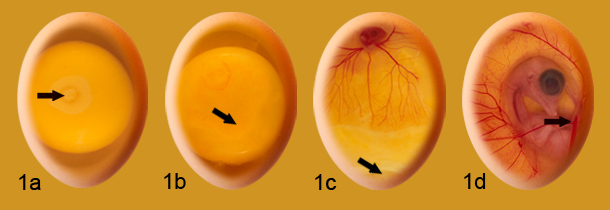Optimal weight loss profiling during incubation
Tags: Incubation | Whitepaper
, December 11 2010

Good hatchability is dependent on meeting all crucial incubation parameters. One of these important parameters is weight loss. Eggs should lose 11-13 per cent of initial weight during the first 18 days of incubation.
Weight loss in hatching eggs is caused by the continuous evaporation of water from the eggs - and inseparably linked to achieving optimum embryonic development during incubation.
Continuous weight loss from the egg is essential for the formation of the air cell and at the same time, the evaporation of water from the egg facilitates optimised water and mineral balances in the different embryonic compartments formed during embryonic development.
As soon as internal egg temperature increases, evaporation through the shell and the transport of water from albumen to sub-embryonic cavity both increase. The transport of water to the sub-embryonic cavity can be observed as a circular change in the color of the yolk (figure 1b). At day six, most of the water from the albumen has been redistributed, leaving a small jelly-like clod of albumen proteins (figure 1c). As embryonic development continues, the transport and redistribution of water also continues, such that at days 10-12 of incubation, the different embryonic compartments – including the yolk sac, amniotic cavity (figure 1d) and the allantois - are filled with a watery solution containing a balanced concentration of essential minerals. A balanced composition of the embryonic compartments is essential for the transport of nutrients to and waste products from the embryo.
The redistribution of albumen water over the different embryonic compartments has no effect on absolute weight loss, but it does affect the pattern of evaporation within the egg and therefore has an important effect on mineral balance in the different embryonic compartments. This is best illustrated during the first days of embryonic development, by the loss of egg weight as a result of evaporation from the albumen. In the second week of development however, water evaporates mainly from the allantoic cavity, directly under the egg shell.
If during the first week the valves of the incubator are kept closed and as a result relative humidity levels increase to 75 per cent or more, weight loss is restricted. The consequence of this limited weight loss is that compensatory weight loss must then be achieved during the last days of incubation, by maintaining very low settings - 40% or even less of relative humidity. However, if climate in the setter and/or hatcher is very dry during the final days of embryonic development, water will evaporate not only from the egg shell and shell membranes, but also and undesirably from embryonic tissues like the skin and legs.
Advice
- Aim for 12 per cent total weight loss from initial egg weight during the first 18 days (between 0.6-0.7% per day) for optimum chick quality.
- Start opening the air inlet gradually after four days of incubation to avoid relative humidity becoming too high, as this will require relative humidity to be kept low during the last days of incubation to achieve the desired 12 per cent weight loss at day 18.
- Use either a fixed relative humidity set point of 50 – 55% or alternatively allow a gradual decline from 60% to no less than 45%, to allow sufficient evaporation of water from the eggs. Finetune set points based on chick quality, hatchability and/or achieved weight loss.
- Increase relative humidity during the last days of incubation if chicks, shells and shell membranes show signs of dehydration. Dehydrated chicks show dried scales and shanks and the muscles on thighs and drumstick feel small.

Figure 1a) fresh egg with a blastoderm (arrow) and a uniform colored yolk. (1b) After 48h of incubation, the light colored yolk (arrow) as a result of water transport to the sub-embryonic cavity can be clearly recognized. (1c) After six days of incubation, the albumen is reduced to a jelly-like clod. (1d) Day 10 embryo floating in the amnion cavity (arrow).